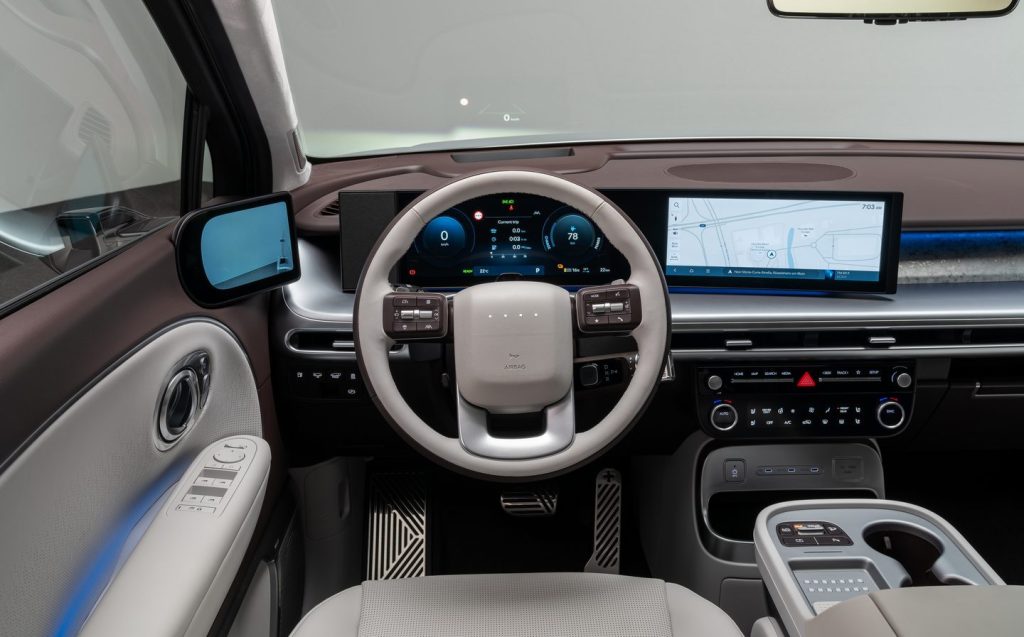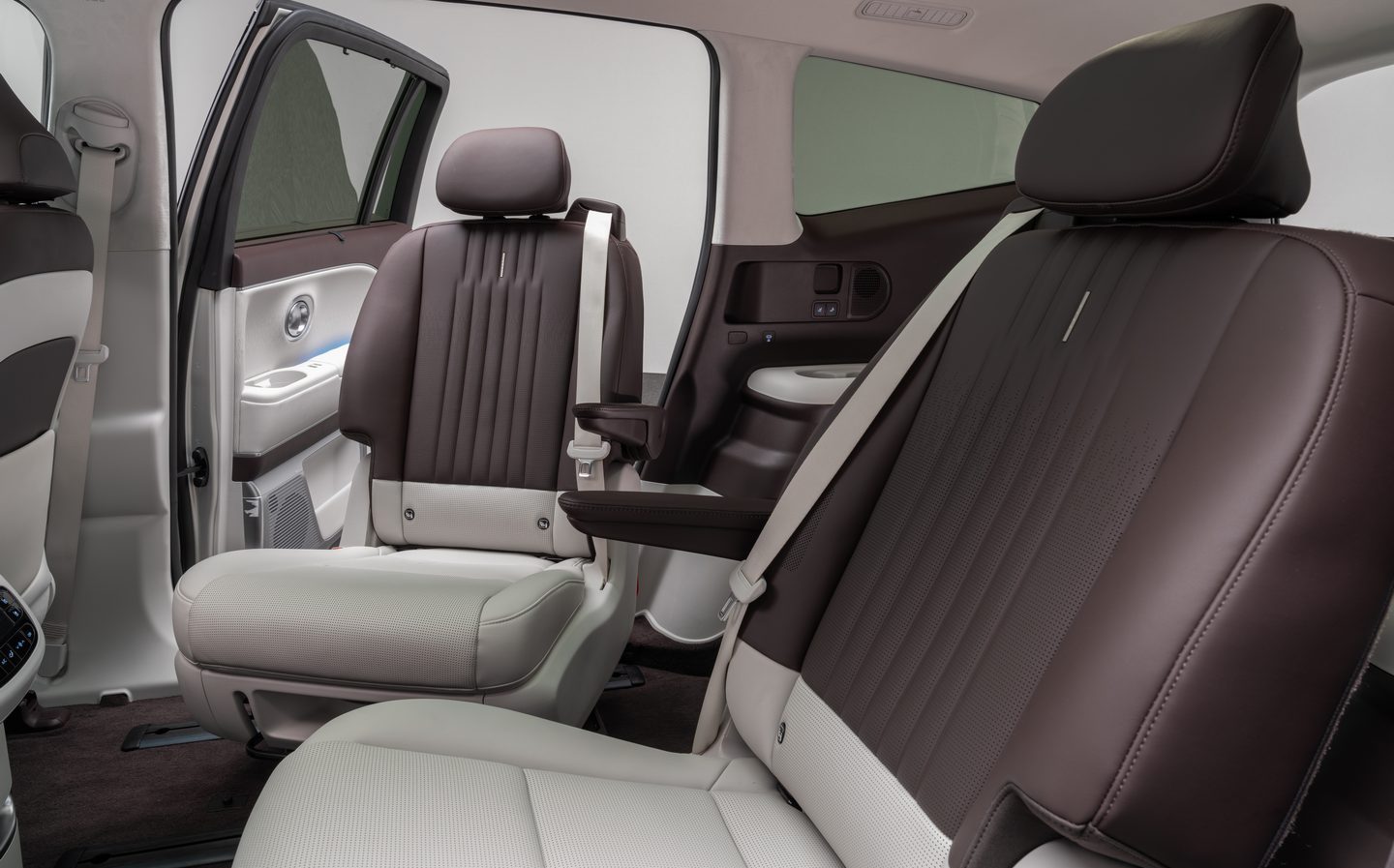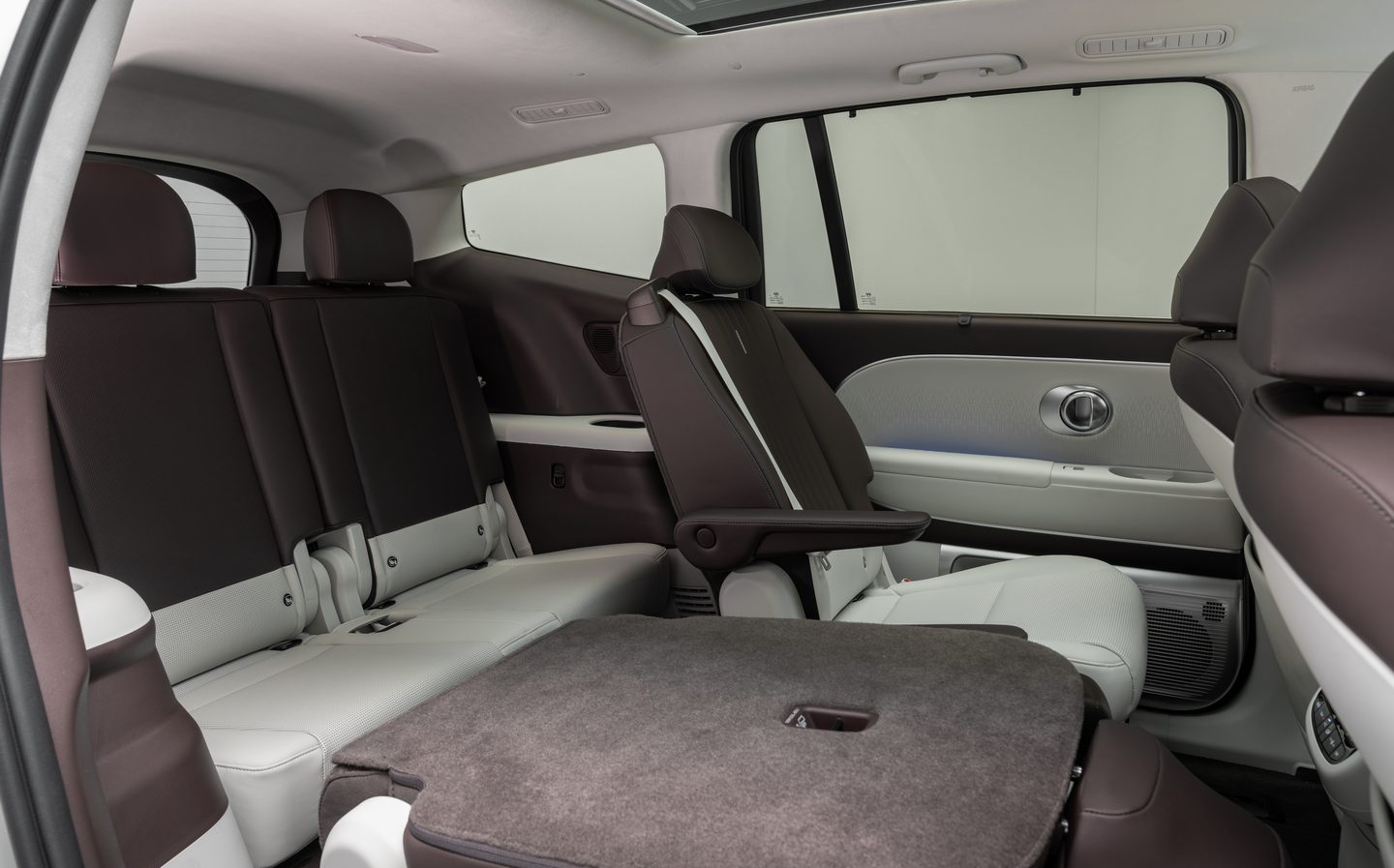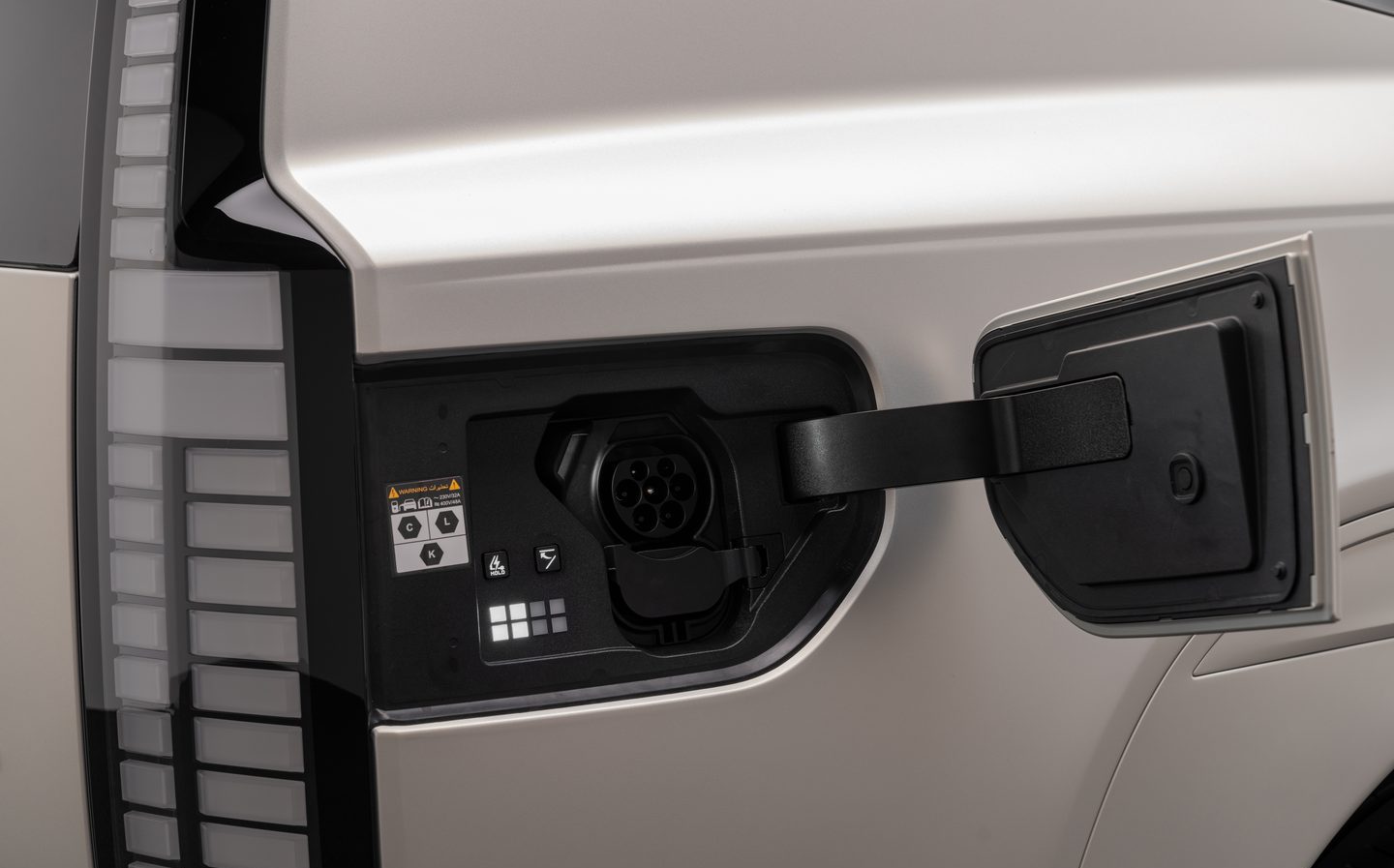Hyundai Ioniq 9 seven-seat electric SUV gets claimed 385 miles per charge
Lessons learned from the Kia EV9?
This week’s Los Angles motor show played host to the world debut of a brand-new electric SUV from Hyundai. Called the Ioniq 9, it’s set to top the Korean firm’s line-up, sitting above the existing, hybrid-only Santa Fe.
With an electric range of up to 385 miles and a spacious seven-seat cabin, the Ioniq 9 rivals its close relation, the Kia EV9, and may even step on the toes of the forthcoming electric Range Rover.
Big dimensions for big interior
Admittedly, the Rangie has differing credentials — impressive off-road ability and an ultra-luxurious image being among them. It’s also larger than the Hyundai, but the Ioniq 9 is longer and taller than the Kia EV9 with which it shares much of its underpinnings, and the distance between the front and rear wheels is greater, to the benefit of interior space. That makes it usefully more commodious than the Santa Fe, as well.
Hyundai will offer the Ioniq 9 with a choice of six or seven seats, the difference found in the second row, where the six-seat version features two individual chairs for maximum luxury. They can recline fully (as can the fronts), and swivel around to face the rearmost row so everyone can have a game of charades while waiting for the car to charge up.

At 338 litres when all seats are in use, the boot space is a little larger than the Ford Fiesta’s, which isn’t saying much, though that figure isn’t the “loaded to the roof” number. Hyundai quotes a cavernous 908 litres when the rearmost seats are folded down, and there’s additional storage under the bonnet up front.
All the technology
The general style and design of the cabin mix elements of the Santa Fe and Hyundai’s other Ioniq cars to good effect, though only images of the range-topping Calligraphy model have been released to date.

Up front there are 12in screens for the digital instruments and infotainment, mounted within a single curved surface, though mercifully Hyundai continues to use separate physical switchgear for heating and ventilation.
As expected, over-the-air updates are part and parcel of the system. So are less-welcome “Features on Demand” — i.e. you pay to enable features that are already physically installed in the car. Other carmakers have included heated seats and certain advanced driver aids in such pay-as-you-go packages.
Smartphones can be used as digital keys and there’s a high-mounted wireless phone charger on the centre console, which is cooled to keep batteries from overheating. That can slide backwards to be accessed by those in the second row as well.
Hyundai is particularly proud of the Ioniq 9’s USB-C ports, found in all three rows. They are powerful, at 100W, and as they draw energy directly from the car’s high voltage drive battery rather than the 12-volt electrical system, they can be used for long periods without interruption.
As with other modern Kia and Hyundai EVs, the Ioniq 9 also features V2L (Vehicle-to-Load) technology allowing three-pin appliances to be run off a plug socket in the boot — perfect for the likes of e-bikes and camping equipment.

Another piece of tech you may have noticed in the images is the use of cameras instead of door mirrors — though they’re unlikely to be standard-fit. The view is sent to 7in OLED screens mounted on the doors, which have a zoom-out function for reversing, manoeuvring guidelines and an auxiliary line for lane changes.
Obsession with aero for the exterior
When the Ioniq 9 is fitted with the side view cameras and the smallest wheels available (19in), its drag coefficient is a remarkable 0.259. That’s lower than the same figure for the smaller Ioniq 5, for example, and has been achieved through what Hyundai likes to call “aerosthetics”, which is about balancing low drag with a body shape that is still attractive to the eye.
This is perhaps an acknowledgement that it compromised too much on the design of the Ioniq 6 to make it such a slippery-through-the-air “streamliner”. We can’t be the only ones to think the car looks more like a large estate from some angles than a big SUV, though it’s possible the styling will polarise opinion.

Though the Ioniq 9’s design is notably smooth and quite unadorned, there are no obvious aerodynamic appendages, other than the cameras. The antennae are hidden out of sight and the door handles retract flush when the car is on the move, while there’s an active air flap at work that you can’t see as well. A recognisable element is the Ioniq 9 continuing with the Ioniq family’s “Parametric Pixels” LED light signature front and rear.
Big battery, decent range
The smooth exterior should help maximise range, of course, and Hyundai has fitted a large battery as well for the same reason. It’s a whopping pack with a capacity of 110.3kWh, and though full details on the car’s range and efficiency have yet to be released, it’s projected that the most efficient version will manage that claimed range of up to 385 miles on a full charge.
That’s for the single-motor, rear-wheel-drive model, which has a modest 214bhp at its disposal. Two dual-motor, all-wheel-drive variants will be offered alongside, including the top-level Performance model with up to 428bhp and 0-62mph in just 5.2 seconds.

UK pricing has yet to be confirmed, and it’s likely to be the latter half of 2025 before the Ioniq 9 arrives in any case, but it’s expected to cost more than the Santa Fe — which starts at £51,885 — and at least as much as the Kia EV9, currently priced from £65,025.
Related articles
- If you found news of the new Hyundai Ioniq 9 interesting, you might like to watch Hyundai’s high-performance Ioniq 5 N electric car in action on ice
- Also check out our review of the Hyundai Ioniq 5
- Here are all the car makers’ electric vehicle plans
Latest articles
- Porsche 911 Carrera S 2025 review: Harder, better and faster – but is it the best 911?
- F1 2025 calendar and race reports: The new Formula One season as it happens
- Seven great automotive events to visit this summer, from F1 to art and champagne
- Watch new Porsche 911 GT3 smash Nürburgring record for manual cars
- Skoda Elroq 2025 review: Czech carmaker can’t seem to miss with its electric family cars
- Five best electric cars to buy in 2025
- Should I buy a diesel car in 2025?
- Zeekr 7X AWD 2025 review: A fast, spacious and high tech premium SUV — but someone call the chassis chief
- Denza Z9GT 2025 review: Flawed but sleek 1,062bhp shooting brake from BYD’s luxury arm






























